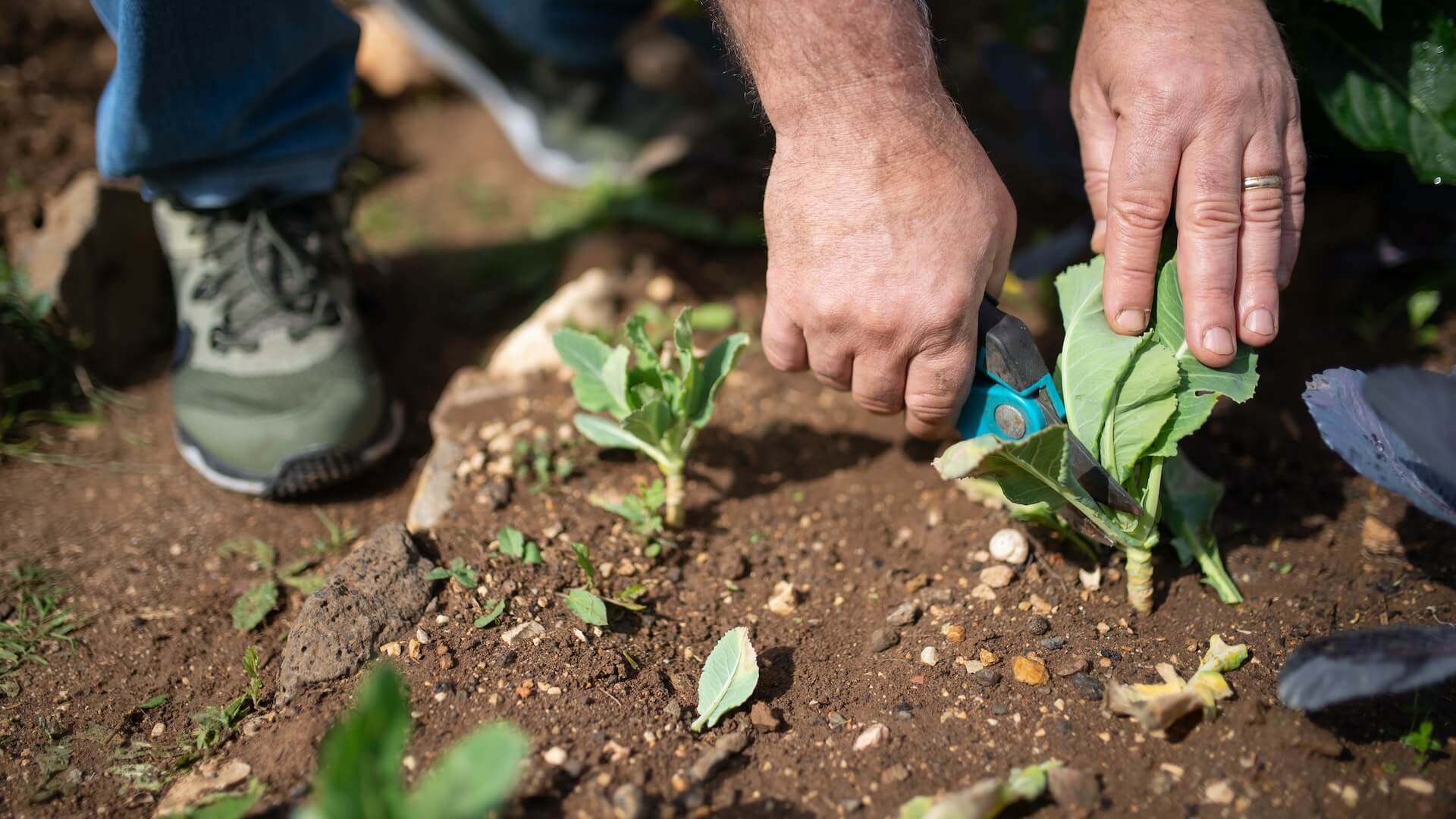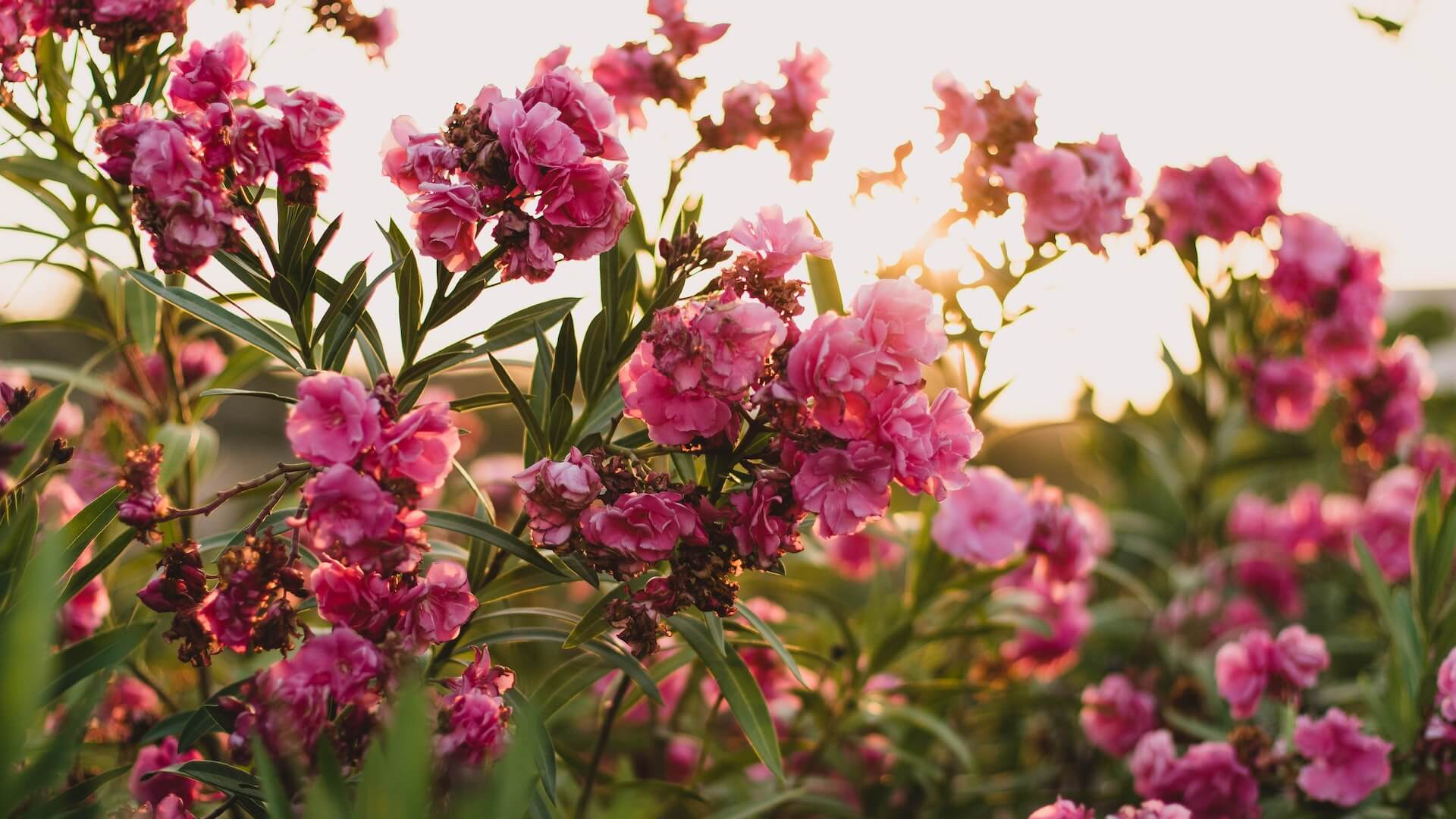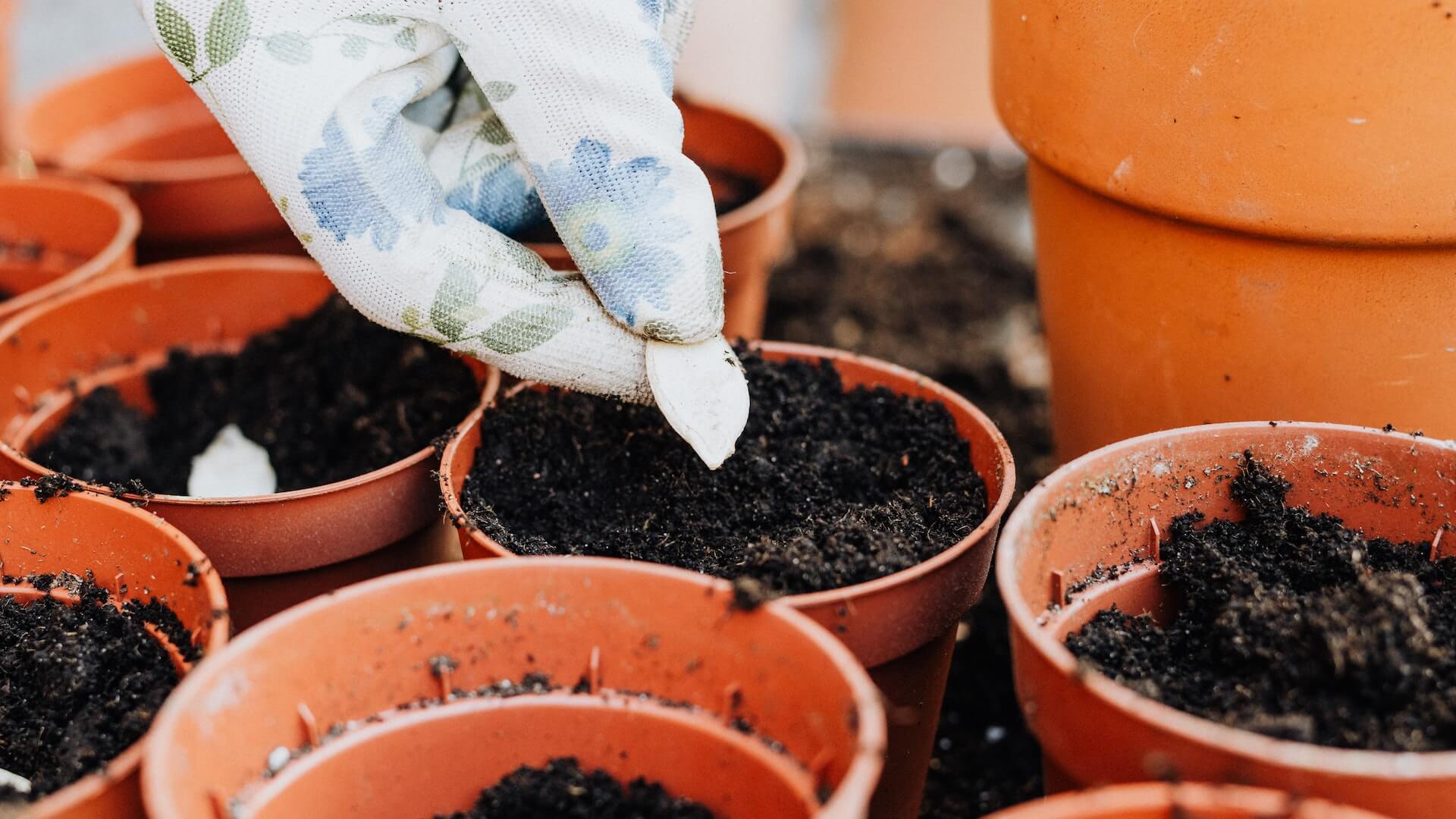Pruning is an essential part of gardening that is often overlooked. It involves selectively removing parts of a plant to improve its overall health, appearance, and productivity. Whether you are a novice or an experienced gardener, pruning can seem intimidating, especially if you don’t know where to start. But don’t worry, we have got you covered. In this post, we will provide you with the ultimate pruning guide that includes tips and techniques to help you maintain a flourishing garden. From the best time to prune to the tools you need, we will cover everything you need to know to become a pruning expert. So, let’s get started and learn how to prune your plants like a pro!
Understanding the benefits of pruning for plant health and growth
Pruning is not just about shaping your plants or maintaining a neat appearance in your garden. It plays a vital role in promoting the overall health and growth of your plants. Understanding the benefits of pruning will not only help you make informed decisions but also ensure a flourishing garden.

Firstly, pruning helps in removing dead, damaged, or diseased branches or stems. These unwanted parts not only detract from the aesthetic appeal of your plants but can also serve as entry points for pests and diseases. By removing them through proper pruning techniques, you prevent the spread of infections and create a healthier environment for your plants to thrive.
Secondly, pruning stimulates new growth. When you prune your plants, it encourages the development of new shoots and branches. This is especially beneficial for fruit-bearing plants as it promotes better fruit production. By selectively removing certain branches, you can redirect the plant’s energy towards the desired areas, resulting in stronger and more productive plants.
Furthermore, pruning helps in maintaining the shape and size of your plants. Overgrown or unruly plants not only look untidy but can also overshadow or compete with neighboring plants for sunlight and nutrients. By carefully pruning and shaping your plants, you create a more balanced and visually appealing garden while ensuring each plant receives sufficient resources to thrive.
In addition to these benefits, pruning also improves air circulation and light penetration within the plant canopy. This reduces the risk of fungal diseases and helps in maintaining the overall vigor of your plants. Proper pruning techniques can open up the foliage, allowing sunlight to reach lower branches and leaves, promoting photosynthesis and overall plant health.
Different types of pruning: shaping, maintenance, and rejuvenation
Understanding the different types of pruning techniques is crucial in achieving the desired shape, promoting plant growth, and rejuvenating older plants. Let’s explore the three main types of pruning: shaping, maintenance, and rejuvenation.
Shaping pruning is primarily done on young plants to establish their desired form and structure. By selectively removing certain branches, you can guide the growth pattern and create a visually appealing shape. This type of pruning is commonly used in topiaries or formal gardens where precise shapes are desired. Shaping pruning requires careful planning and regular maintenance to maintain the desired form as the plant grows.
Maintenance pruning, as the name suggests, focuses on the ongoing care of plants to encourage healthy growth and maintain their desired size and shape. It involves the removal of dead or damaged branches, thinning out dense growth, and shaping plants to enhance their natural form. Regular maintenance pruning not only enhances the aesthetic appeal of the garden but also improves air circulation and sunlight penetration, reducing the risk of pests and diseases.
Rejuvenation pruning is often necessary for older or overgrown plants that have lost their vigor or become unsightly. This technique involves drastic pruning, often cutting back the plant to its base or main framework. While it may seem harsh, rejuvenation pruning stimulates new growth, rejuvenates the plant, and improves its overall health. It’s important to note that not all plants respond well to rejuvenation pruning, so it’s crucial to research specific plant requirements before attempting this technique.
Before diving into any type of pruning, it’s essential to understand the specific needs of your plants. Proper timing, tools, and techniques are crucial for successful pruning. Remember to always use sharp and clean tools to make clean cuts and minimize the risk of infections. Additionally, be mindful of the plant’s growth habits and natural form, ensuring that your pruning efforts enhance rather than damage the overall health and appearance of your garden.
Essential tools and equipment for successful pruning
To achieve a flourishing garden through pruning, having the right tools and equipment is essential. These tools not only make the pruning process easier but also ensure precise cuts and promote the overall health of your plants.

1. Pruning Shears:
Also known as hand pruners or secateurs, these are the most basic and versatile tools for pruning. They are designed to cut small branches and stems with precision. Look for pruners with a bypass cutting mechanism, as they provide clean cuts without damaging the plant tissue.
2. Loppers:
Loppers are similar to pruning shears but with longer handles and larger cutting blades. They are ideal for reaching higher branches with thicker stems that are beyond the reach of hand pruners. Loppers provide more leverage and cutting power, making them suitable for medium-sized branches.
3. Pruning Saw:
For thicker branches that cannot be easily cut with shears or loppers, a pruning saw is indispensable. Choose a pruning saw with a sharp, curved blade designed for cutting through wood efficiently. Look for models with comfortable handles and a locking mechanism for safety.
4. Hedge Shears:
If you have hedges or shrubs in your garden, hedge shears are a must-have tool. These large, scissor-like shears have long, straight blades that make trimming and shaping hedges a breeze. Opt for lightweight hedge shears with adjustable blade tension for more control and comfort.
5. Pole Pruner:
For reaching branches at greater heights, a pole pruner is a valuable tool. It consists of a long pole with a pruning saw or lopper attached to the end. Some pole pruners come with an extendable pole to provide even more reach. Ensure that the pole pruner is lightweight and has a secure locking mechanism for safety.
6. Gloves:
Don’t forget to protect your hands while pruning. Invest in a good pair of gardening gloves that offer both dexterity and protection. Look for gloves made of durable, breathable materials with reinforced palms and fingertips.
7. Disinfectant:
To prevent the spread of diseases or pests between plants, always disinfect your pruning tools before and after each use. Use a solution of rubbing alcohol or a bleach mixture to clean the blades thoroughly.
Timing: when to prune different types of plants
Each plant has its own growth patterns and preferred pruning time, and understanding these nuances will help you make the most of your pruning efforts.
For deciduous trees and shrubs, the ideal time for pruning is during their dormant season, which is typically in late winter or early spring. This is when the plants are no longer actively growing, and pruning at this time encourages healthy regrowth once the warmer weather arrives. However, it’s important to note that some early-flowering shrubs, such as forsythia or lilac, bloom on old wood, so they should be pruned immediately after flowering to avoid cutting off next year’s blooms.
On the other hand, pruning evergreen trees and shrubs can be done throughout the year, but it’s generally recommended to avoid pruning during extreme weather conditions, such as during the hottest months of summer or the coldest days of winter. Pruning these plants in early spring or early fall is often a good rule of thumb.
When it comes to fruit trees, timing is crucial for maximizing their productivity. Pruning should be done during late winter or early spring before the buds start to swell. This allows the tree to focus its energy on producing healthy fruit rather than excessive growth. It’s also important to prune fruit trees annually to remove any diseased or dead branches, improve airflow, and maintain a manageable size for easier harvesting.
For flowering perennials and annuals, the timing of pruning depends on the specific plant and its blooming cycle. Some plants, like lavender or salvia, benefit from a mid-summer pruning to encourage a second round of blooms. Others, such as fall-blooming asters, can be pruned in early spring to promote bushier growth and more abundant flowers.
Pruning techniques for trees, shrubs, and flowering plants
Pruning is not just about randomly cutting off branches; it requires careful consideration and knowledge of different techniques to ensure the health and vitality of your plants.

For trees, pruning helps in removing dead or diseased branches, improving the tree’s structure, and promoting healthy growth. One common technique is called “crown thinning,” which involves selectively removing branches to increase light penetration and airflow within the tree canopy. This helps prevent diseases and encourages new growth.
Shrubs, on the other hand, can benefit from techniques like “rejuvenation pruning.” This involves cutting back the entire shrub to a few inches from the ground, stimulating new growth and rejuvenating the plant. It is important to research the specific pruning requirements of each shrub species, as some may prefer different timing and techniques.
Flowering plants often require specialized pruning techniques to maintain their shape and maximize blooming. For instance, “deadheading” is a common practice where faded flowers are removed to encourage new blooms. Additionally, some flowering plants may benefit from “thinning out” techniques, which involve selectively removing weaker branches to redirect energy towards stronger growth.
Regardless of the plant type, it is crucial to use sharp and clean pruning tools to avoid causing damage or introducing infections. It is also recommended to prune during the appropriate season, as timing can vary depending on the plant species.
Step-by-step guide to pruning for beginners
While it may seem intimidating at first, with the right knowledge and techniques, pruning can become a rewarding and satisfying task.
Step 1: Start with the right tools
Before you begin pruning, gather the necessary tools such as sharp pruning shears, loppers for thicker branches, and a pruning saw for large limbs. Make sure your tools are clean and well-maintained to ensure clean cuts and minimize the risk of disease transmission.
Step 2: Identify the pruning goals
Before making any cuts, it’s important to identify your pruning goals. Are you looking to shape the plant for aesthetics? Or perhaps you want to promote better air circulation and sunlight penetration? Understanding your goals will help guide your pruning decisions.
Step 3: Remove dead or damaged branches
Begin by removing any dead, diseased, or damaged branches. These can be easily identified by their lack of foliage, discoloration, or signs of decay. Removing these branches will not only improve the overall appearance of the plant but also prevent the spread of diseases.
Step 4: Remove crossing or rubbing branches
Next, look for branches that are crossing or rubbing against each other. These can create wounds that provide entry points for pests and diseases. Choose the weaker or less desirable branch and carefully remove it at its point of origin to maintain the plant’s natural shape.
Step 5: Thin out overcrowded areas
Overcrowded branches can hinder air circulation and sunlight penetration, leading to poor plant health. Identify areas with excessive growth and selectively remove some branches to create a more open and balanced structure. This will help promote better growth and flowering.
Step 6: Maintain the plant’s shape
Pruning can also be done for aesthetic purposes, to maintain the desired shape of the plant. Whether it’s a formal hedge or a shrub with a specific form, carefully trim the branches to achieve the desired outline. Step back periodically to assess the shape and make adjustments as needed.
Step 7: Clean up and care for your tools
After completing the pruning process, it’s important to clean up any debris and properly dispose of the pruned branches. Also, take the time to clean and sanitize your tools to prevent the spread of diseases between plants.
Common mistakes to avoid when pruning
Unfortunately, even the most well-intentioned gardeners can make mistakes that can harm their plants and hinder their growth. To ensure your pruning efforts are successful, it’s crucial to familiarize yourself with common mistakes to avoid.
One of the most prevalent mistakes is pruning at the wrong time. Each plant has its own optimal time for pruning, which is often determined by its flowering season or growth patterns. Pruning at the wrong time can disrupt the plant’s natural cycle and inhibit its ability to thrive. It’s essential to research and understand the specific needs of each plant in your garden to ensure you prune at the appropriate time.
Another common mistake is improper pruning techniques. Incorrectly cutting branches or stems can cause damage, introduce diseases, or even lead to the death of the plant. It’s crucial to use sharp, clean tools and make precise cuts at the correct angle. Avoid leaving stubs or cutting too close to the main stem, as this can impede the plant’s ability to heal and promote new growth.
Over-pruning is another pitfall to avoid. While pruning is necessary for shaping and maintaining the health of plants, excessive pruning can be detrimental. Removing too much foliage can weaken the plant, reduce its ability to produce energy through photosynthesis, and make it more susceptible to pests and diseases. It’s important to strike a balance and only remove what is necessary for the plant’s well-being.
Lastly, neglecting to prune regularly is a mistake that can lead to unruly and unhealthy plants. Regular pruning helps maintain the desired shape, encourages robust growth, and improves overall plant health. Skipping pruning sessions can result in overcrowding, reduced airflow, and increased risk of disease.
Dealing with pruning challenges: overgrown plants, disease, and pests
One common challenge is dealing with overgrown plants that have become unruly and out of control. If left unchecked, these plants can overshadow smaller ones, restrict airflow, and hinder their overall growth. To address this issue, it is vital to understand the specific needs of each plant species and the best time to prune. Carefully removing dead or diseased branches, as well as selectively thinning out the foliage, can help rejuvenate overgrown plants and restore balance to your garden.
Another challenge that gardeners often face is managing diseases and pests that can negatively impact the health and vitality of plants. Pruning can be an effective preventative measure and a means of controlling the spread of diseases. It is crucial to identify any signs of infection or infestation early on and promptly remove affected parts. This will help prevent the issue from spreading further and protect the overall well-being of your garden.
When dealing with pruning challenges, it is essential to equip yourself with the right tools and techniques. Using sharp, clean pruning shears or saws will ensure precise cuts and minimize the risk of introducing infections to healthy plants. Additionally, understanding the proper pruning techniques for different plants and growth patterns will enable you to make informed decisions and achieve desired outcomes.
Aftercare: tips for promoting healthy regrowth and maintaining the garden’s beauty
After pruning your garden, it’s crucial to provide the proper aftercare to promote healthy regrowth and maintain the beauty of your outdoor space. Here are some essential tips to ensure your garden flourishes:

1. Watering:
Adequate watering is essential to support regrowth after pruning. Ensure that your plants receive sufficient water, especially during dry spells or hot weather. Water deeply and consistently, allowing the soil to absorb the moisture and reach the plant’s roots.
2. Fertilizing:
To encourage healthy regrowth, consider using a balanced fertilizer that provides essential nutrients. Choose a fertilizer suitable for your specific plants and follow the recommended application instructions. Regular fertilization can promote lush foliage and vibrant blooms.
3. Mulching:
Applying a layer of organic mulch around your plants helps retain moisture, regulate soil temperature, and suppress weed growth. Mulch also adds nutrients to the soil as it breaks down, providing a favorable environment for regrowth.
4. Pruning Wounds:
After pruning, it’s crucial to protect any open wounds on your plants to prevent diseases or pests from entering. Consider applying a pruning sealant or a thin layer of horticultural glue to seal the cuts and promote healing.
5. Pest and Disease Control:
Regularly inspect your plants for any signs of pests or diseases. Swiftly address any issues by using organic pest control methods or consulting with a professional if necessary. Healthy plants are more resistant to pest infestations and diseases.
6. Regular Maintenance:
Keep up with regular maintenance tasks such as removing dead leaves or spent flowers. This helps maintain the overall appearance of your garden and prevents potential disease or pest problems.
7. Monitoring and Adjusting:
Keep a close eye on your plants’ growth and adjust your care routine accordingly. Monitor sunlight exposure, soil moisture levels, and any signs of nutrient deficiencies. By paying attention to your garden’s needs, you can make timely adjustments to ensure its continued health and beauty.
Conclusion
Pruning is an essential task for any gardener, and with the tips and techniques shared in this blog post, you’ll be able to enhance the health and beauty of your plants. Remember to always consider the specific needs of each plant and follow proper pruning practices. As you put these tips into action, we’re confident that your garden will thrive and become a source of pride and joy. Happy pruning!




3 Comments